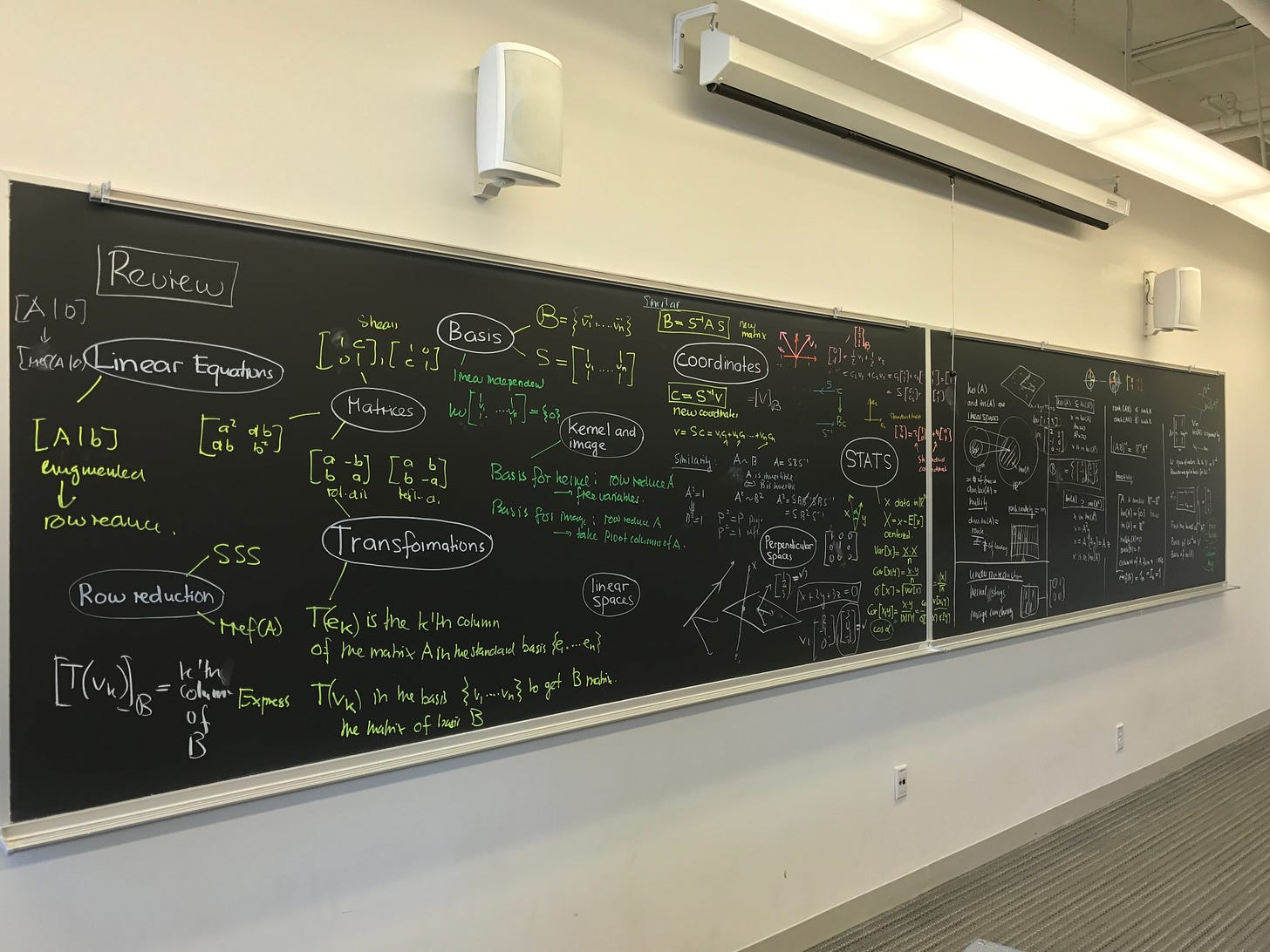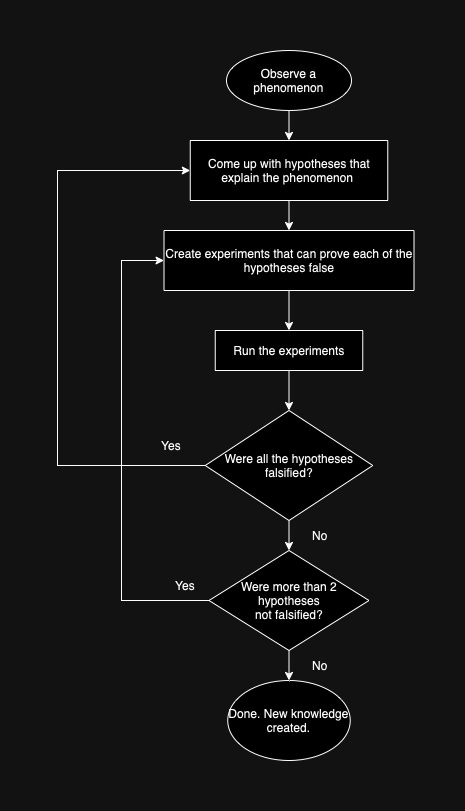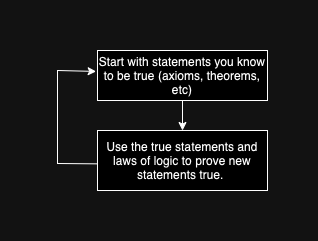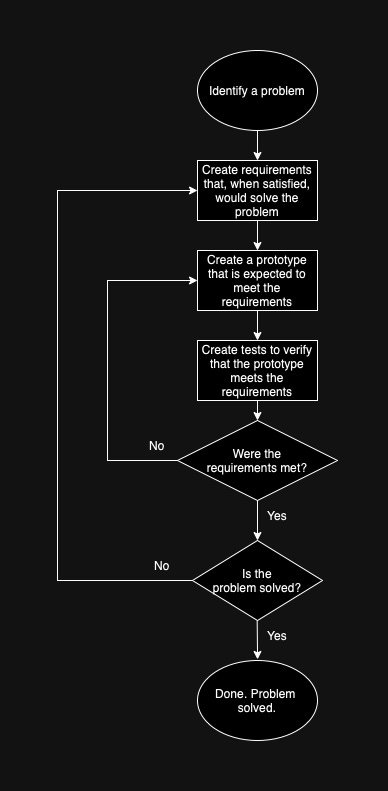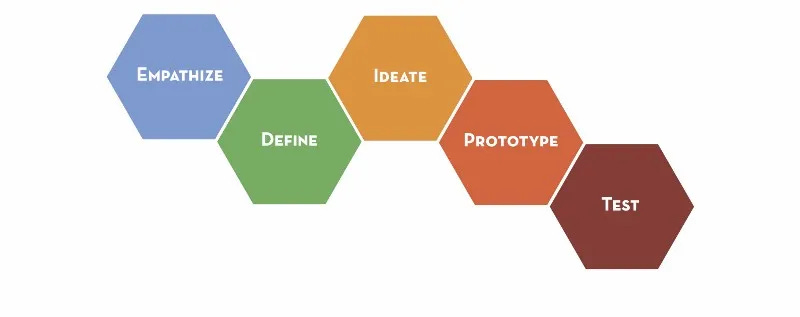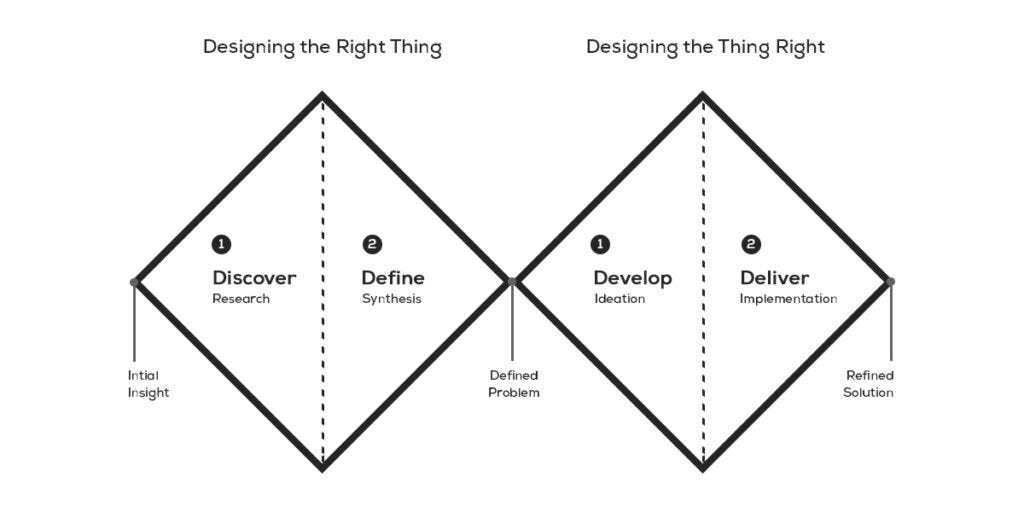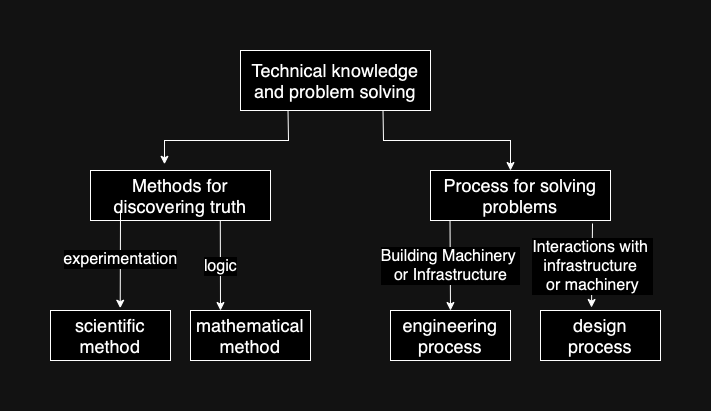A Taxonomy of STEM and a Qualified Defense of STEAM
Definitions, acronyms, and a new way to think about technical education
In a previous post, I outlined the way I think about the buzzword-y acronym STEM to highlight the difference between science and engineering. Both science and engineering are processes albeit with different goals: science is a way of determining what is true while engineering is a method for solving problems. The STEM acronym is a hyped-up meme, but like any meme with staying power, it hints at a deeper truth. It points in the vague direction of a corner of human knowledge where technical things are explored and for that reason I think it’s a good place to start.
The scientific method is the empirical process by which new knowledge is discovered. Science is a process of creating hypotheses and then creating tests to prove the hypotheses incorrect. If you prove all of your hypotheses incorrect, then you need to make new hypotheses and new experiments to test them. If you fail to prove two or more of your hypotheses incorrect then you need to design a better test and if you prove all the hypotheses incorrect except one, then you have new knowledge. Write it up, publish it and wait for people to challenge it. This is the scientific method. Here is a flowchat:
Mathematics can also be thought of as a method for discovering new knowledge using logic alone. The mathematical method is very simple: use statements that you know to be true and rules of logic to prove new statements true. Using the new statements, and the laws of logic, you can prove even more things to be true. While I’m calling this the ‘Mathematical Method’ it’s use isn’t limited to mathematics. This can be used for any endeavor that uses logic as a way of discovering truth like philosophy, law, journalism, etc. Mathematics happens to be the most abstract and concise expression of logical reasoning and is also part of the STEM acronym, so I call it the Mathematical method.
Engineering is a process of solving problems, usually for building machinery. In many ways engineering works in an opposite way to science. In science you want to run experiments to rule out possible hypotheses. In engineering you want to run tests to make sure that your design meets certain criteria. I like to use the phrase exhaustive falsification vs iterative verification to describe the difference. In my engineering flowchart, I show the method that I use for engineering. First step is to identify a problem with a concise, objective problem statement. Second step is to create requirements that will solve the problem. Then you think of a bunch of prototypes and build the one that is the most promising. Once the prototype is created, tests are created and run to see if the prototype meets the requirements. If the prototype does not meet the requirements, it needs to be changed. If the prototype does meet the requirements but still fails to solve the problem then there is an issue with the requirements so they will have to be revised. If the prototype both meets the requirements and solves the problem then the process is finished. On to the next one.
Technology is the end result. Technology is an outcome, not a process, and for that reason I don’t think it belongs with Mathematics, Science and Engineering. However, things get interesting when the word ‘Art’ is thrown in to form STEAM.
The acronym STEAM was gaining traction when I was finishing college in the mid 2010s. When I first heard this addition, I thought it was pretty dumb. “What do paintings and symphonies have to do with engineering?” However, when mathematics, science, and engineering are viewed as processes, rather than static bodies of knowledge, the addition of art makes a bit more sense. However 'art' is far too broad a category to have a concise meaning and its normal connotation I believe is a bad fit for math, science and engineering. The word ‘art’ invokes The Louvre, the Sistine Chapel, the opera, Carnegie Hall, ballet performances. I think these fine and performing arts are valuable expressions of culture that should be cherished, but they don’t fit with STEM. However, the applied arts like architecture, industrial design, and graphic design, which I will collectively call ‘design’ are an excellent fit. In fact they almost perfectly complement the engineering process. I don’t have much formal training in design. But I do have an internet connection, so I spent some time looking to see if there is a formal design method similar to the scientific method. From about an hour of searching, I noticed two methods repeatedly come up: ‘design thinking’ and the double diamond method.
As to be expected, these diagrams are more elegant and refined than my flowcharts, but they match the engineering process nearly step for step: create a problem statement, create prototypes, test the prototypes and refine them until a solution is reached. Engineering and design use the same approach to solve similar problems, just with different viewpoints. What’s more, engineers and designers often have parallel disciplines. Civil engineering is inextricably linked with architecture and urban planning. Mechanical engineering with industrial design, software development with UI/UX design, and many more. The engineers focus on the machinery, the physical and the quantifiable while the designers use the same process to focus on how humans perceive and interact with the technology. Design and engineering are two different lenses for looking at the same method. What’s more, both engineers and designers — or individuals with both engineering and design acumen — are required to make functional things.
STEAM should really be SDEM? (MEDS?) to reflect the four processes for discovering truth and solving problems. It can be further split into the truth-seeking methods: mathematics and science and the problem solving methods: engineering and design.
By viewing mathematics, science, engineering and design as processes that discover truth and generate solutions rather than simply as static bodies of knowledge, the way in which technical education and training is currently done seems backwards. Lecture halls and problem sets reinforce a rote memorization of static bodies of knowledge. Rather than spend a majority of the time cranking out problem sets and memorizing formulas, the time should be spent instead doing projects and experiments that sharpen people's abilities to use and apply the scientific, mathematical, engineering and design methods.
The terms “first principles” and “process oriented” may seem diametrically opposed to one another, but using axioms to derive new things is in fact following a process and a very good one if that. Developing a technical education curriculum around these four methods would make for more effective scientists, technicians, engineers and mathematicians. And designers too.


